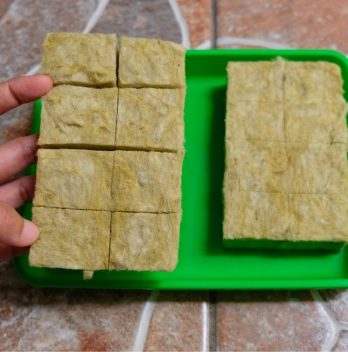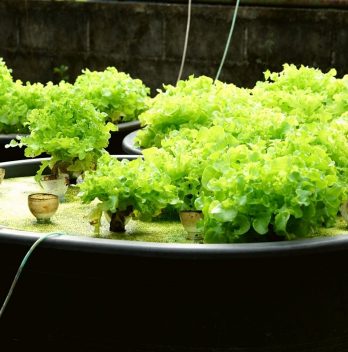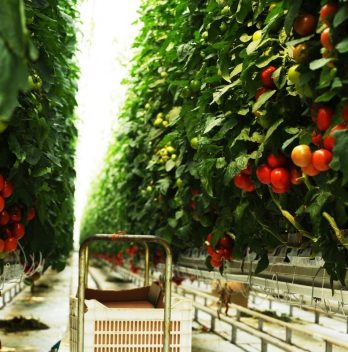The height of grow light above plants needs to be positioned appropriately for your plants to absorb adequate light and at the same time prevent plant burns. With the various types of grow light available in the market, each of them has a specific distance to be obeyed so your plants can flourish.
All the stages of a plants’ life cycle, be it vegetative, flowering, fruiting, or even seedlings require the correct grow light distance to grow adequately. This shows the distance you give between your grow light and plants will have a say on the overall indoor garden yield. So, let’s get right into discussing grow height above plants.
How Close Should Grow Lights Be To Plants?
Even though determining the exact grow light height above plants cannot be specifically ascertained: we can still give a good starting point. What will help is to begin with trial and error. Then you gradually move the grow light closer to or farther away till you get the appropriate distance that suits your plant’s growing needs.
Like we said, various grow lights have different hanging distances. So, each of this grow lights will determine the distance to your plants’ canopy. The wattage (which is one of the determinants of the strength of a grow light) of the grow light will as well decide how far or how close the distance will be.

For example, grow lights that generate more heat will require them to be hung a bit far from the plants’ canopy to avoid plant burns. At the same time, some grow light generates powerful spectrum that requires them to be hung a bit far from plants’ canopy to prevent bleaching. (I.e. leaves turning white)
Let’s take a look at the grow light height above plants for LED, HID, and T5 fluorescent lights. We will also look at how far your grow light should be during various plant stages such as seedlings, vegetative, flowering, and fruiting stage.
1. HID Grow Light Height Above Plants
HID grow lights are known to generate more heat. Thus, they should be positioned at least 12 inches from your plants’ canopy. Also, if your grow light is powerful say for instance 1000 watt, it should be hanged at least 15 inches away. Lesser HID wattage lights of 400 or 600 watts can be hanged around 20 to 25 inches respectively. This grow light distance is ideal for all plants stage.
2. LED Grow Light Height Above Plants
Even though LED lights don’t emit too much heat, their light spectrums are very powerful. They can be too overwhelming on some types of plants that they may suffer bleaching if positioned too close.
Grow light of 900 watts and above should be positioned 26 to 42 inches away from plants’ canopy. Then 600 to 850 wattage of LED light should be positioned 24 to 26 inches away. 450 to 550 watts LED grow light should be hung 20 to 30 inches away from plants. And 240 to 400 watts needs 16 to 30 inches LED grow light distance.
While this LED grow light height above plants is obeyed, it is necessary for LED lights to be moved closer to the plant during the flowering phase. This is because they will require more light intensity during this stage.
3. Fluorescent Grow Light Height Above Plants
Fluorescent grow lights are one of the most efficient lights to use as they offer smooth blended energy and spectrum. They are low generating heat which makes them safe to be placed close to plants’ canopy. Placing them too far from the plants will reduce their light intensity thus; reducing the energy the plants receive.
Although fluorescent light comes in various shapes and sizes, we will generally recommend a distance of at least 12 inches away from your plants. Ensure the height does not exceed 12 inches as this can reduce the light energy your plants receive.
2-Pack T5 HO Grow Light – 1 Bulb Light System – Fluorescent Hydroponic
However, you can do a trial by starting at a grow light distance of 5 inches. If you notice any discomfort symptoms shown by your plants you can move the grow light a bit higher. Do this until you find the perfect spot that will suit your plants.
You can use the stated grow light distance using fluorescent light for all plant stages.
Grow Light Distance Seedlings
Seedlings are known to be pretty fragile. So this is why we need to know the appropriate grow light hanging distance to these seedlings. However, seedlings also need to be supplied with a good amount of light so they can grow efficiently. Depriving seedlings of adequate light will cause slow development and leggy growth.
For LED grow lights, you can do a distance of 8 to 12 inches away from your seedlings. While for T5 fluorescent grow lights, you can do a distance of 5 to 6 inches away from your seedlings.
How Much Light For Seedlings
Let’s determine the amount of light seedlings require using PAR (Photosynthetically Active Radiation). We will be looking at achieving 120 to 150 micromoles per second per meter square of PAR delivered to your seedlings. Also, you can supply your seedlings light for 12 to 18 hours per day.

FAQ’s
Do Grow lights have to be above plants?
Grow lights can be placed above the plants.
Grow lights can be placed at any height from ground level to 15 feet or more. I would recommend that you do not place your grow light directly on the soil as this will cause your plant to burn and eventually die. The best way to position a grow light is to have it over a pot so that the roots are just barely touching the sides of the pot and the rest of the plant is in shade.
This will keep the plant healthy and happy. You can also hang a hanging plant holder with a light bulb in it over a pot.
Any wattage will do as long as it produces enough light to promote growth. A good wattage light would depend on what type of plants you are growing, how much space you have and your budget. There is no “best” wattage light. It depends on your own personal preference and budget. Grow lights are available in a wide variety of wattages, from 1 watt to 50 watts. The higher the wattage, the more light is emitted.
How do you tell if grow light is too close?
There are many ways to tell if a grow light is too close to the plants.
You’ll want to consider the distance from the light fixture to the plant, and the height of the light fixture. If the light fixture is high enough, it will not be visible above the top of the pot or growing substrate. This can be a problem with fluorescent lights, which are very high. If the fixture is too low, you’ll see shadows cast by the light fixture on the plants.
You can measure the amount of light your plants get by measuring how far the light has to be moved to get the same amount of light on the plants.
The first thing to look for is light color. If the light is very yellow, then it is too close. If the light is blue, then it is too far away. This is because red light penetrates deeper into the plant and makes it grow faster, while blue light makes the plants more spindly.
Another way to tell if the grow light is too close is to look at the reflection on the leaves. If there are little lights reflected on the leaf, then it is too close. If you see a lot of refl
Can grow lights be too bright?
Grow lights can be an important part of growing indoor plants. However, some growers have noticed that their plants seem to grow a bit more slowly when the lights are on, and they also grow a bit larger. Growers sometimes use light intensity to control the size and shape of their plants.
Your choice will depend on how much light you need, the type of light you want to use, and your budget. The three main types of lights are fluorescents, metal halide and high-pressure sodium lamps. Fluorescents are the cheapest, but have a very narrow color spectrum, which can cause problems if you’re using plants that require more than one color of light. Metal halide is the most expensive, but has a broad color spectrum, and produces a lot of heat,. High-pressure sodium lamps are the least expensive of the three, and they have a broad color spectrum, they produce less heat, and the spectrum is similar to natural sunlight.
Final Note On Grow Light Height Above Plants
Determining the appropriate grow light height above plants is not so difficult to tell if you have the right knowledge. Different grow lights are built differently and they have their various hanging distance that must be followed. Follow our guidelines on the right distance to hang your grow light.
Also, some of these grow lights have the manufacturers’ recommended hanging distance stated on the grow light package. You can also start with that and later adjust your grow light until you get the appropriate distance.
Note that once you purchase a new grow light, it is recommended you keep a close eye on your garden to see how your plants receive this new light. This way, you can quickly notice any slight change in your plants’ response to the light and make the right adjustments accordingly.

Eunice is an enthusiastic gardener with a passion for growing beautiful flowers. She loves nothing more than spending time in her garden, tending to her plants and enjoying the outdoors. Eunice has been gardening for over 15 years and has developed a unique style of landscaping that is both practical and aesthetically pleasing. She is especially fond of growing roses and enjoys experimenting with different varieties and colors. Eunice takes great pride in her garden and often shares the fruits of her labor with friends and family. In her spare time, she enjoys reading gardening magazines and attending local horticulture events. Eunice is passionate about her hobby and is always eager to share her knowledge and experience with others.




























